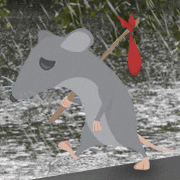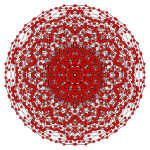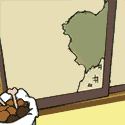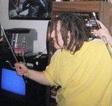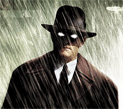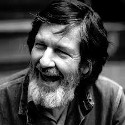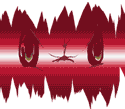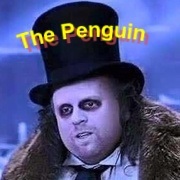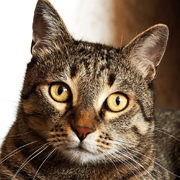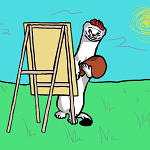|
justsomedude posted:I'm not mad that someone disagrees with my theory. My theory is probably bullshit. I'm just surprised that some of the ideas we've been led to believe are fairly established are built on premises that seem so flimsy. I mean, if you can Google to find out that a random N.C. Supreme Court judge gave a speech to a ladies' club in a random town in North Carolina on 5/8/1913, you can also Google that zero monuments or landmarks were built for the judge or the event. Isn't that a hint that maybe your connection is a bit tenuous, at least? There is definitely some tenuous stuff throughout, largely because that's all we have and we don't know how deep/not deep some of these clues are. I don't think the book connection is particularly tenuous though. As shown in this post: http://forums.somethingawful.com/showthread.php?threadid=3552196&userid=0&perpage=40&pagenumber=21#post416126607 At least two verse quotes are in this book, and it's a book about observations about America from foreign visitors coming to see it. It was published by the Smithsonian just a few years before Preiss did his national tour of casque burial, and it references locations all around the US. While certainly now, almost 40 years later, it seems obscure, at the time I suspect it was more well-known.
|
|
|
|

|
| # ? Apr 26, 2024 09:13 |
|
CHARLESTON There are four parts of the Charleston image that are still really bugging me. 1) The pattern on the lion's forehead. This looks like a coastal/river map but I can't make it match up with anything in google maps. Part of the problem may be that the coastlines may look really different at high and low tide. 2) The patterns in the fairy's wings. The outer edges look vaguely like coastline (perhaps the "wings" of the harbor mouth?) but again, don't quite match up. The inner sections look a little like cobble-stone streets (Chalmers street?) but again nothing quite matches. For a while I thought I could get them to match up with Shute's Folly Island / Castle Pinckney (what a great location to bury something!) but again, doesn't quite fit (and what other landmarks would be on Castle Pinckney to triangulate off of?) 3) The pine branch, and 4) the pear -- are these connected? A rebus of some kind? All I can come up with is "hey, sometimes pears look like apples, pineapple? Pineapples are all over Charleston!" but that's a huge stretch it seems. And there's only one really striking Pineapple landmark in Charleston, the pineapple fountain in waterfront park, and that wasn't built till the '90s. EDIT: Doing searches on Google maps, I don't turn up any pear or pine streets in Charleston (though there's a pear street out in Hollywood it's not near anything significant). There's an Evergreen street out west ashley but it's just a modern suburban neighborhood. Hieronymous Alloy fucked around with this message at 18:36 on Jun 5, 2013 |
|
|
|
|
Dr. Bit posted:Milwaukee I actually tried that already in Gimp. I couldn't get anything to line up maybe more than say 80% no matter how I flipped it. Believe me when I say I could flip, scale, and rotate just about anything to fit any of the figures contours almost 80%. I figured if I was say.. '95% accurate' I would have posted something. The closest I got was what I posted earlier where the river lines up with the contour of the face which puts the gemstone somewhere in Bay View. I will keep at it but, until I see something I am extremely confident in I probably won't post it. At least not until we figure out some more of the clues. As far as finding a contour match in general, I believe if the area is larger than 1 sq mile it really doesn't help anyway. We already know 100% the image is Milwaukee. Unless the gemstone itself is a marker for the point to start looking. quick edit: The Pabst Theater has a huge connection with German heritage. Despite the fact we are unsure about "woman with harpsichord", do any of the other clues fit with that building? I saw the nickname for the theater was "Grand Ole Lady". crashdome fucked around with this message at 18:32 on Jun 5, 2013 |
|
|
|
Hieronymous Alloy posted:CHARLESTON That pine/pear thing was bugging hell out of me too, if only because those are two different trees and they've been combined here very purposefully, I assume. Also, literally nothing we've discussed so far, as you've noted, has taken the fairy into account, and that's a pretty big part of the image. The only thing I could think was that, if we assume that the shape of the park/area of the casque is included in some of these pictures, then the loose end of the material tied around the fairy's chest that's hanging down a bit is pretty much the same shape as White Point Garden. Edit: 
TotalHell fucked around with this message at 18:39 on Jun 5, 2013 |
|
|
|
Hieronymous Alloy posted:CHARLESTON As another goon suggested, try using an Atlas instead of a satellite image. That's what the artist in the 80's would have used.
|
|
|
|
The Pear could be Pearman bridge and/or a hint at the South Carolina flag, with a crescent in the shadow:
BJG fucked around with this message at 18:48 on Jun 5, 2013 |
|
|
BJG posted:The Pear could be Pearman bridge and/or a hint at the South Carolina flag, with a crescent in the shadow: Hrrrmmm. If the Pear is (was) the Pearman bridge, it's gone now. Maybe the pine branch is actually a road or river map with the pear marking where the bridge connects/crosses it? I also wondered if the butterfly fair wings were a reference to the butterfly pond out at Middleton PLace but again doesn't fit.
|
|
|
|
|
Imazul posted:Pie IX is a street that pretty much cross Montreal completely from South to North. It's also a metro station on the green line that is neat the Olympic Park. It's nowhere near the legeater statue though. which is the metro that connects to the Olympic stadium, which opened in 1976 there a 76? anywhere in the picture? 
|
|
|
|
Hieronymous Alloy posted:CHARLESTON If you look at allta's post on page 26, the "summary post" for this cask, the waterway on the mask was addressed. Orange_Lazarus provided a map that shows a very similar/matching water way with the pattern on the mask. So, my guess would be to start from that area on google maps and see if anything else will correspond with the lion's head e: gave credit to the goon who posted the watermap/mask e: realized I can't read and had to rewrite...cuz i suck PunkNickel fucked around with this message at 19:13 on Jun 5, 2013 |
|
|
|
Desperation and lack of progress have driven everyone to more and more radical solutions that may become too clever for our own good. Itís only natural that if we canít find something obvious we look for something more obscure. I want to help lay down some guiding principles for anyone starting the hunt or laying down theories. 1. The best clue is a treasure found and we have two. If you havenít started by looking at those, then youíre at a serious disadvantage. 2. Locations of the last two were parks, near walls or barriers, buried approximately 3.5 feet deep. The cask is very small, and the North American continent is not. If you donít have a terrific idea of where it is, donít bother breaking ground. 3. Donít put too much stake in a theory unless it has resulted in treasure. It doesnít matter if the theory was made by someone who spent a decade searching, it can still be total bunk. You can evaluate the evidence they used. For example, I can see that while many have pointed to Golden Gate Park, the only evidence is that the dress sort of resembles the shape. The shape is a rectangle, and itís not a great match. Unless thereís some other compelling reason, thatís a theory without much weight. The Fort Sumter map on the other hand has the weight of a thousand elephants. 4. The two successful treasures both have been found entirely by clues that are one layer deep. There has always been some sort of silhouette of a recognizable building or object. In fact, there were several in each image. These are images of objects you can find and point to that match the images exactly. Sometimes it includes statues that are not even very well obscured. There has not yet been a clue which has relied on a ton of depth. 5. Not all theories are created equal. Simple and direct is better than a convoluted mess. Theories relying on fewer layers and more direct meanings are better. Theories that are deep and convoluted sound fantastic and brilliant and can lure us in, but that does not mean they are good in the context of this puzzle. Evidence points to the contrary. Example Good Theory: That outline is an exact match of this streetlight. Bad Theory: The eleven moons in the San Francisco picture represent Apollo 11. The president at the time was Nixon. Nixon went to China, and the opera house in San Francisco once had a play called Nixon in China. The treasure is at the opera house. 5. A valuable clue has to be distinct and eminently recognizable as such. Circles, rectangles, spirals, or pillars are not distinct. There are billions of them in any city. There are billions of things named after Lincoln or Twain, and even more things that caught their attention at some point. 6. The picture is the key to it all. In both of the found treasures, the evidence pointing to the location was almost entirely in the picture. To stay on the right path, you should not even look at the poems until there is substantial evidence from the picture relating a few landmarks or objects. 7. The poems are almost more of a fine tuning to the treasure location that uses descriptions of objects and things in the immediate vicinity. They do not tend to be deep, broad clues. These are poetic or somewhat abstract representations of specific concrete objects. 8. Check the date. If it wasnít around in 1980, then thatís your cue to let it be. 9. Check reality. The author wasnít some sort of brilliant puzzle making genius who wanted to make the most radically difficult and clever puzzles in the universe. In one of his poems he said ďL sits and left beyond his shoulderĒ and L was used to refer to Lincoln. Thatís not clever; itís really sort of lazy. And remember he also didnít have Google satellite imagery and an absolute knowledge of the history of every city he visited. 10. In thirty years, a lot can change and has changed. The best clues may have been destroyed or moved. Note: Feel free to correct any of my assumptions here. Flewdefur fucked around with this message at 19:13 on Jun 5, 2013 |
|
|
PunkNickel posted:If you look at allta's post on page 26, the "summary post" for this cask, this has been addressed. Orange_Lazarus provided a map that shows a very similar/matching water way with the pattern on the lions head. I think the post you're referencing is about the pattern on the mask, not the pattern on the lions' forehead. The pattern on the mask is a 100% match with the Charleston peninsula, it's what nails that as the Charleston image. Only idea so far for the lion-forehead is a map of the Holy Roman Empire and that just doesn't seem to match up.
|
|
|
|
|
Hieronymous Alloy posted:I think the post you're referencing is about the pattern on the mask, not the pattern on the lions' forehead. The pattern on the mask is a 100% match with the Charleston peninsula, it's what nails that as the Charleston image. I realized that after I wrote it, so I went back and pointed that maybe looking first at the masks waterway first, then expanding from there to find the lion's seems the next logical step. I'm not sure the about the Holy Roman Empire either, as it really has changed borders so much over history. Doesn't make sense to me, I think your looking for waterways is probably right. Or, we're both terribly wrong. Sorry for being a dick goon and not paying attention to what you said. non content: after hanging around here over a decade this has been the best thread I've ever read....thank you OP...
|
|
|
|
Flewdefur posted:The two successful treasures both have been found entirely by clues that are one layer deep. There has always been some sort of silhouette of a recognizable building or object. In fact, there were several in each image. These are images of objects you can find and point to that match the images exactly. BP said that some puzzles were harder than others though, and I think the two solves were among the easiest. I don't think the image matches in most of these is anything like as clear and simple as Chicago. BJG fucked around with this message at 19:51 on Jun 5, 2013 |
|
|
|
BJG posted:
What the hell? He says at the end of the article that someone was instructed to spill the beans if something happened to him, which did. Did you ask the wife about that?
|
|
|
|
Well, the fatal car accident occurred in 2005, more than twenty years after the book came out. Maybe he thought that no one would care? Then again, the second cask had been found just the year before, so he must have known that there were a few people still interested. Charleston I found that Charleston is nicknamed "The Holy City" because it has a lot of churches. If my wild guess about the lion having the Holy Roman Empire on its forehead is right, maybe it's just a general hint towards Charleston and not something more specific?
|
|
|
|
Flewdefur posted:Desperation and lack of progress have driven everyone to more and more radical solutions that may become too clever for our own good. Itís only natural that if we canít find something obvious we look for something more obscure. I want to help lay down some guiding principles for anyone starting the hunt or laying down theories. This should be in the OP! Very good set of "Rules and guidelines" Slayer1597 fucked around with this message at 19:52 on Jun 5, 2013 |
|
|
|
Fistgrrl posted:What the hell? He says at the end of the article that someone was instructed to spill the beans if something happened to him, which did. Did you ask the wife about that?
|
|
|
|
Flewdefur posted:
One person can say something that seems obscure but to someone else it could be a piece of a puzzle. The real problem is the disorganized way the data is being amassed, at the moment it's just a piled up heap. This needs project software and project management. The Monkey Man posted:Well, the fatal car accident occurred in 2005, more than twenty years after the book came out. Maybe he thought that no one would care? Then again, the second cask had been found just the year before, so he must have known that there were a few people still interested. In the email about st louis he basically said "great job finding all that after 20 years but I'm still telling ya jack poo poo!" Bloke fucked around with this message at 20:02 on Jun 5, 2013 |
|
|
|
Fistgrrl posted:What the hell? He says at the end of the article that someone was instructed to spill the beans if something happened to him, which did. Did you ask the wife about that? Anecdote from Egbert: quote:When Siskel and I finally met BP, he ended up taking us to the bank vault in NYC where the jewels were kept. He also said the solutions to the puzzle were in the same drawer. I got the impression that he was very similar to the "absent-minded professor." Don't forget, it took him about a year to find the key to the vault. Siskel and I stood outside the private room as BP sifted through the drawer which he had not looked through in about 24 years. One thing he found were savings bonds totalling $25,000 which he had forgotten about. You would think that since Siskel and I were responsible for him finding those bonds, that he would have treated us to lunch at least, but no such luck.
|
|
|
|
Charleston This is my first post in this thread, I made my way though the whole thing, I am sorry if I missed this and it's a repost and it might also be a HUGH leap but... The Pear looks like a Bosc Pear, compared to the other Pear varieties. Louis Augustin Guillaume Bosc, whom the Pear was named after, was a french botanist who discovered 3 new species of fish at Charleston Harbor as well as 3 new species of mushroom. I can't find any connection with Pine. There is species of Pine called Morris and an Morris Island
|
|
|
|
Flewdefur posted:Desperation and lack of progress have driven everyone to more and more radical solutions that may become too clever for our own good. Itís only natural that if we canít find something obvious we look for something more obscure. I want to help lay down some guiding principles for anyone starting the hunt or laying down theories. All very good points, and it's leading me to think way more broadly about the Charleston image. What are the major themes of this image? The lion and mask would indicate an African theme, and then the pear, pine, and daisy represent perhaps an agricultural theme? Would it possibly be as simple as "agricultural theme = garden?" hence White Point Garden? Sorry, White Point Garden is my pet theory right now, so I'm kind of working toward that with everything.
|
|
|
|
Fistgrrl posted:What the hell? He says at the end of the article that someone was instructed to spill the beans if something happened to him, which did. Did you ask the wife about that? Not spill the beans, but allow cask finders to still exchange keys for jewels. Good to know the jewels aren't necessarily unobtainable.
|
|
|
|
Flewdefur posted:Desperation and lack of progress have driven everyone to more and more radical solutions that may become too clever for our own good. Itís only natural that if we canít find something obvious we look for something more obscure. I want to help lay down some guiding principles for anyone starting the hunt or laying down theories. This is in the OP now. i'll add the rest later as well as the links, I'm only passing through right now so I don't particularly have time but I wanted to try a bit of an experiment. So, humor me for a bit here. Rank all 12 casks in terms of apparent difficulty based on the picture and the verse(if known)
|
|
|
|
LargeHadron posted:Not spill the beans, but allow cask finders to still exchange keys for jewels. Good to know the jewels aren't necessarily unobtainable. I thought the jewels were sold off in his liquidation. quote:If I should die -- get hit by a truck or something -- one person has been instructed to open the directions to the remaining treasures. They are locked in a bank vault." I read this as spill the beans, but I guess if BJG (did you do all the lemon tiger pdfs?) says he was an absent-minded professor, he probably lost the solutions. I just want to know. Haha.
|
|
|
|
Fistgrrl posted:I thought the jewels were sold off in his liquidation. Well son of a bitch. But yeah, I took "they are locked in a bank vault" to mean "the treasures are locked in a bank vault." Now I see it means "the directions are locked in a bank vault."
|
|
|
|
TotalHell posted:Sorry, White Point Garden is my pet theory right now, so I'm kind of working toward that with everything. Combining that with my theory... The southern tip of Charleston's peninsula was originally known as Oyster Point and later White Point Louis Augustin Guillaume Bosc had identified new types of Oysters and there is a White Pine. York_M_Chan fucked around with this message at 20:42 on Jun 5, 2013 |
|
|
|
Yeah the jewels are no longer there unfortunately, finding the cask really just gets you the cask itself. I was unclear on this for a little while too even though it's explicitly stated in the OP.
|
|
|
|
Chadula posted:Fricken sweet! However how do you get her to take us there for free!? I don't wanna spend another 15 bucks to go see the fort! Last time I was there i didn't see any trees really. I'm still tolling over which verse is in regards to charleston. I have a reciprocal pass good for me and a guest. But since I work the ticket window at Sumter I think we will be ok for tickets.
|
|
|
|
SheepNameKiller posted:Yeah the jewels are no longer there unfortunately, finding the cask really just gets you the cask itself. I was unclear on this for a little while too even though it's explicitly stated in the OP.
|
|
|
|
Cask 2 Since it is associated with Africa, I went and searched around all waterways in Africa to see if anything matched up with the pattern on the Lion's forehead. Nothing is even remotely close. Altho, the suggestion that was made about Charleston being named The Holy City, and that it resembled the Holy Roman Empire sounds a bit more convincing.
|
|
|
|
Hieronymous Alloy posted:CHARLESTON I completely agree. The branch, flower, pear, and lion's forehead are all still up in the air. I also agree that it's a map on the lion's head and I'm going to be speaking with the head historian at Ft. Sumter and Ft. Moultrie to see if they recognize anything.
|
|
|
|
The star on the Sumter ornament is in the western part of Fort Sumter, when you orient it the way it actually is on a map. The Star of the West was the ship bringing supplies to Fort Sumter that was fired upon by batteries on Morris Island and is often considered the first real shots of the Civil War. Okay, I'm making things too complicated, I'll stop now.
|
|
|
|
Milwaukee I don't know the city at all, but could "A letter from the country" "Of a proud tall fifth" be a reference to the Letter Carrier's Monument, which is at the base of the Germania Building, which happens to have 5 corners (it was also the tallest building in the city when it was built)? I always assumed Letter from the Country referred to the country the puzzle seems to be associated with, which is Germany. It's not too far from the culvert like entrance to city hall and a bridge. It's definitely not too far away from city hall if you read the puzzle like "walk 100 paces once you're on the far side of the bridge", and the direction is more or less correct? Just a thought. Saltin fucked around with this message at 21:20 on Jun 5, 2013 |
|
|
|
At this point for a few of them we just need people on the ground armed with the picture and verse. I'm afraid we are muddying up New Orleans and are about to make it overly complicated. As much as I like my Louis Armstrong Park theory, Jackson Square has a lot of merits "being it" as well. I just wish I could spend time there and look around. and drink. Hurricanes are *right next door* to Preservation hall. Get a Go-cup and solve this drat thing.
|
|
|
|
McIneri posted:I completely agree. The branch, flower, pear, and lion's forehead are all still up in the air. I also agree that it's a map on the lion's head and I'm going to be speaking with the head historian at Ft. Sumter and Ft. Moultrie to see if they recognize anything. BJG posted:The Pear could be Pearman bridge and/or a hint at the South Carolina flag, with a crescent in the shadow: I quite like this theory for the purpose of the daisy. The pear could represent something else, but if you put any more on the daisy, it'll be pulling triple-shift as a stand-in palm tree, a birth flower, and a third piece of symbolism. My guess for the lion's head is somewhere in Africa, since that's the associated location, but I haven't yet checked Google maps. EDIT: Can't find anything along Africa's modern shoreline via Google Maps. Also, it disappoints me that the strange lion shape is not in Kenya. Tjadeth fucked around with this message at 22:05 on Jun 5, 2013 |
|
|
|
New Orleans I didn't want to double post, but I don't want this request lost. Could someone overlay the New Orleans picture over a street map of the french quarter? I was just noticing on google maps how regular, like the checkered background, it was. Maybe those distorted places match up on a map? Edit: as a separate anecdote, I owned this book and it was at my dad's house. I cannot for the life of me remember if I tossed it when I was sorting out his house to sell  This is exactly the scenario hoarders warn against! This is exactly the scenario hoarders warn against!
Kiss Kiss Bang Bang fucked around with this message at 21:48 on Jun 5, 2013 |
|
|
|
BOSTON Took some pics around Copley on lunch today, have some theories, and will post both a bit later tonight. If it is in Copley, and the clues lean to a certain interpretation, I think the box has long been paved over. Unless it's in the Fens. Or somewhere else entirely. JUST TELL ME WHERE THE BOX IS
|
|
|
|
SAN FRANCISCO I've been looking for more hidden/subtle images inside the San Francisco picture. I don't know if this one has been pointed out but I didn't see it marked up before.  I'm fairly sure whatever it is is intentional, and after marking it I can't "unsee" it. It's got a really strong silhouette. Could be a street light or something like that, but I've been scouring Google street view and come up empty handed. Maybe one of you will have better luck.
|
|
|
Tjadeth posted:I quite like this theory for the purpose of the daisy. The pear could represent something else, but if you put any more on the daisy, it'll be pulling triple-shift as a stand-in palm tree, a birth flower, and a third piece of symbolism. Oh wow, daisy-as-palmetto works really well, I hadn't put that together till you said. Could be another sign pointing towards Ft. Moultrie & the palmetto logs.
|
|
|
|
|

|
| # ? Apr 26, 2024 09:13 |
|
Cask 10; Milwaukee General I've been playing around. Perhaps some of you might find this useful? Milwaukee Stuff Historical Buildings List Historic Buildings Tour -High-res picture of the top of the water tower (a possible treasure location)  Yet More Watertower Pictures -Outlined Cape  Looks like trees to me except for the middle one which has a hook on it... Similar to birch trunks actually, with the horizontal lines if you rotate the picture counter-clockwise 90* Miscellaneous - Old Maps! The Website For example, this is Milwaukee 1961
|
|
|










